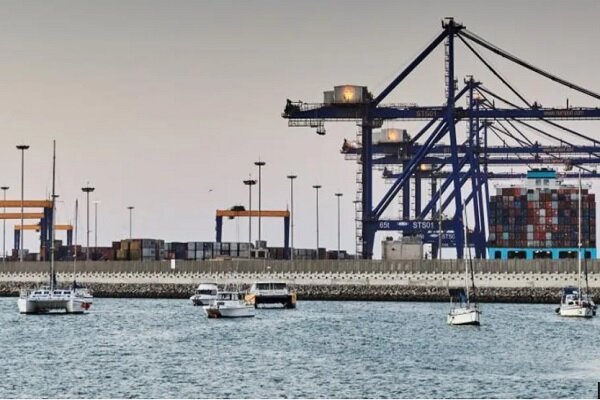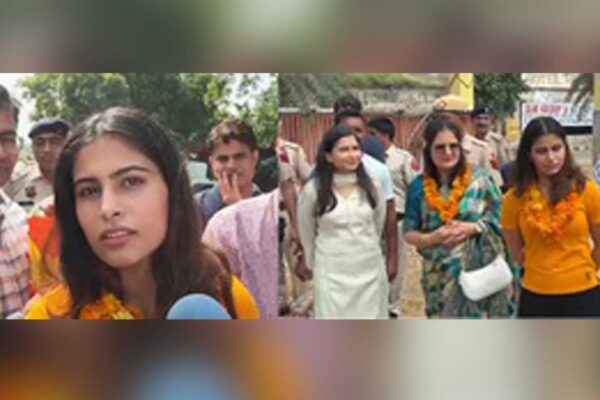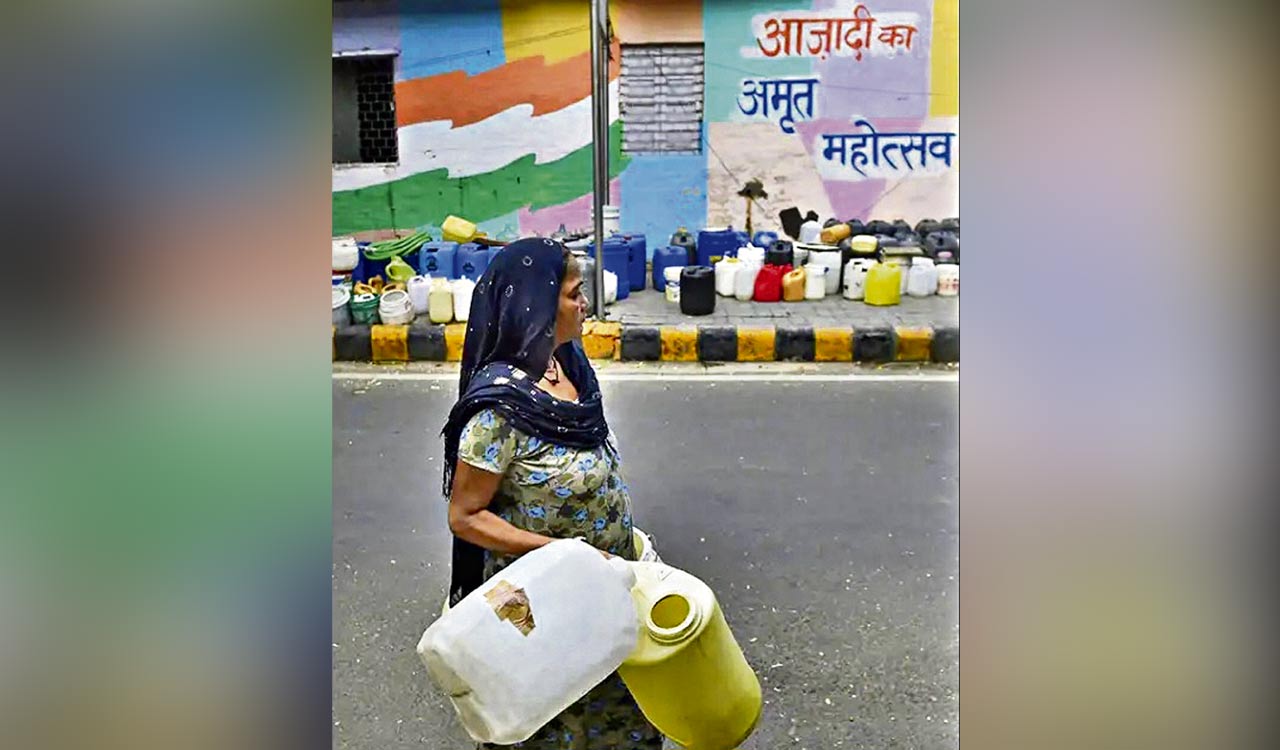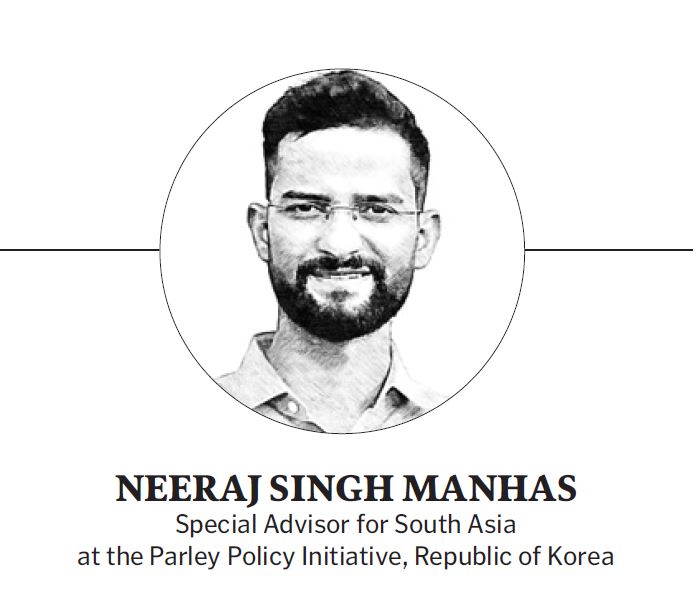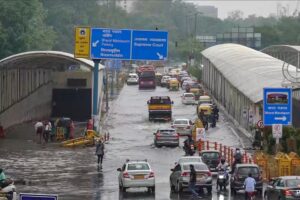In severe cases, India could even face water scarcity where per capita water availability drops below 1,000 cubic metres, putting the country’s water resources under immense pressure
Published Date – 11:45 PM, Wed – 29 November 23

By Neeraj Singh Manhas
India faces significant challenges in water management due to its growing population, agricultural demands, urbanisation and climate change impacts. The 28th session of the Conference of the Parties (COP28) to the UN Framework Convention on Climate Change (UNFCC) could be a critical platform for addressing these challenges.
Stress on Resources
Home to over 1.4 billion people, India has been grappling with water scarcity, which is exacerbated by erratic monsoon patterns, overexploitation of groundwater and pollution of water bodies. Additionally, agriculture accounting for about 80% of water use intensifies the stress on water resources. Rapid urbanisation also contributes to water shortages and quality issues. Climate change further aggravates these problems with extreme weather events like droughts and floods becoming more frequent.
According to a Niti Aayog report, in 2018, over 600 million people lived in water-scarce regions. A study by the Central Water Commission in 2019 titled ‘Reassessment of Water Availability in India using Space Inputs’ found that the average annual per capita water availability in India is projected to decline from 1,486 cubic metres in 2021 to 1,367 cubic metres by 2031. This decline is concerning as it could push India into a water-stressed condition, where per capita water availability falls below 1,700 cubic metres. In severe cases, India could even face water scarcity, where per capita water availability drops below 1,000 cubic metres, putting the country’s water resources under immense pressure. COP28 presents a critical opportunity to address India’s water crisis and ensure a sustainable water future for the country. It will focus on fostering international cooperation, promoting innovative water management solutions and mobilising financial resources to tackle the country’s water challenges.
Catalyst for Change
COP28 holds immense potential to serve as a catalyst for change, bringing together a diverse array of stakeholders, including governments, international organisations, businesses, civil society and communities to collectively address India’s pressing water crisis. By fostering collaboration and shared responsibility, the summit can pave the way for India to achieve water security and ensure a sustainable water future for its citizens.
The advancement in the progress was made at the UN Food Systems Summit in 2021, where water scarcity was a prominent concern. Then another UN Water Conference of 2023 and the Urban Water Catalyst Initiative (UWCI) focused on enhancing the technical and financial performance of urban water and sanitation utilities in mid-sized cities.
Additionally, India must building upon the momentum gained from the Delhi Declaration under the G20 Water Action Plan, where all participating countries united to address this critical issue.
Unlike COP27 in Egypt, where the Egyptian government took the lead in organising the Water Pavilion, the conference in UAE will witness a more inclusive multi-stakeholder approach, which empowers climate action advocates to drive their initiatives forward ensuring that the Water Pavilion here serves as a powerful platform for addressing India’s water challenges.
Innovative Solutions
India needs to adopt innovative water management solutions to address its water scarcity. The 2023 UN Climate Change Conference is an opportunity for countries to promote cutting-edge technologies that can enhance water efficiency, reduce water consumption and improve water quality. These technologies include precision agriculture, water-efficient irrigation systems, wastewater treatment, reuse technologies and drought-resistant crops.
According to Ingrid Timboe, a senior specialist for water within the COP team, a high-level ministerial meeting will also focus on the protection and restoration of freshwater ecosystems. The freshwater challenge aims to conserve intact freshwater ecosystems and restore 3,00,000 kilometre of rivers and 350 million hectares of wetlands by 2030. The goal is to have 30 countries commit to the freshwater challenge. It will also emphasise integrating these commitments into national climate plans.
Key Recommendations
India’s water woes are a pressing concern, and the climate conference presents a crucial opportunity to address these challenges. Some of the key recommendations include prioritising water conservation and efficiency measures, promoting rainwater harvesting and groundwater management, investing in water infrastructure development, strengthening water governance and policies, raising awareness and promoting water literacy, embracing innovative water technologies, fostering regional and international cooperation, integrating climate change adaptation into water management, ensuring equitable and inclusive water access, and investing in research and development. By implementing these measures, India can move towards a more water-secure future.
The escalating water crisis in India demands immediate and comprehensive action. By fostering international cooperation, promoting innovative water management solutions and mobilising financial resources, COP28 can set the stage for India to achieve water security and ensure a sustainable water future for its citizens. The time to act is now, and COP28 holds the potential to catalyse transformative change, ensuring that India’s water woes become a relic of the past. Views are personal

